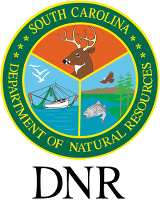Water Modeling
Development of surface water quantity models will be the first step in this water resources assessment. Additionally, ground water models and water-demand forecasts of the four major water use categories will need to be completed for a better understanding of South Carolina's water supplies. The surface water quantity models being developed for South Carolina will be usable by state agencies an all stakeholders (e.g., water utilities, energy companies, environmental organizations, farmers and others) beyond the period of this assessment. Training will initially be provided to SC DNR and SC DHEC staff by CDM Smith. Following completion of all surface water models, training will be offered to stakeholders. This is an incredibly important consideration in that the information being provided to build this model will have a long-standing presence as this model continues to be relied upon by state agencies.
Surface Water Models
The first three SWAMs have been released for the Saluda, Salkehatchie, and Edisto Basins
Click Here to Redirect to the DNR SWAM page to download the available models
The surface water quantity models will simulate streamflow conditions in each river basin using numerous input parameters including USGS streamflow gage data; water withdrawals and discharges; and reservoir releases. The usefulness of a model is driven by its accuracy with real conditions. This is improved upon, for the most part, by the quality and quantity of data used to develop the model. CDM Smith’s Simplified Water Allocation Model (SWAM) will be used for the assessment of South Carolina surface water availability. Per the User’s Manual Version 2.0, SWAM calculates physically and legally available water, diversions, storage, consumption and return flows at user-defined nodes in a networked river system. Features include, per basin model:
- daily and monthly timestep, with the option to use daily timestep in SC;
- up to 80 municipal and industrial water use nodes;
- up to 80 agricultural water user nodes;
- tributary, reservoir, instream flow, recreational pool, and aquifer objects to allow simulation of entire river system;
- ability to use both simple and complex operating rules;
- detailed output data tables for each model object.
Groundwater Flow Models
Groundwater flow models will be used to predict water-level declines, recharge rates, and impacts of groundwater withdrawals on aquifers, streamflows, and on other users in the inner and outer coastal plain. A groundwater availability study of the SC Coastal Plan and a flow model were developed by the US Geological Survey in 2010.
Future Growth Projections
Water-demand projections will be made for agriculture, energy, industry, golf, and public and domestic supply over a 50-year planning period.





